Introduction to Mount Kilimanjaro's Climate Zones
Mount Kilimanjaro is often referred to as a "sky island," and for a good reason. As you ascend its slopes, you'll move through distinct Kilimanjaro climate zones, each with its own weather patterns, vegetation, and challenges. It's like walking from the equator to the Arctic in just a few days. The climate zones of Kilimanjaro can be broadly categorized into five main zones:
- Cultivation Zone (800 - 1,800 meters)
- Rainforest Zone (1,800 - 2,800 meters)
- Heather and Moorland Zone (2,800 - 4,000 meters)
- Alpine Desert Zone (4,000 - 5,000 meters)
- Arctic Zone (5,000 - 5,895 meters)
Each of these zones offers a unique environment, and understanding them can help you better prepare for the trek.
1. The Base: Cultivation Zone (800 - 1,800 meters)
The journey up Mount Kilimanjaro begins in the Cultivation Zone, a lush and fertile area that extends from about 800 meters to 1,800 meters above sea level. This zone is characterized by warm temperatures, abundant rainfall, and rich volcanic soils, making it perfect for agriculture. Here, you'll find small farms growing crops like bananas, coffee, and maize, which are staples for the local Chagga people.
Climate and Vegetation
In this Kilimanjaro climate zone, you'll find banana plantations, coffee farms, and maize fields. The weather is mild, with temperatures ranging between 50°F and 70°F (10°C to 21°C). It's a pleasant start to your climb, with plenty of opportunities to interact with the local Chagga people, who have lived and farmed in this region for centuries.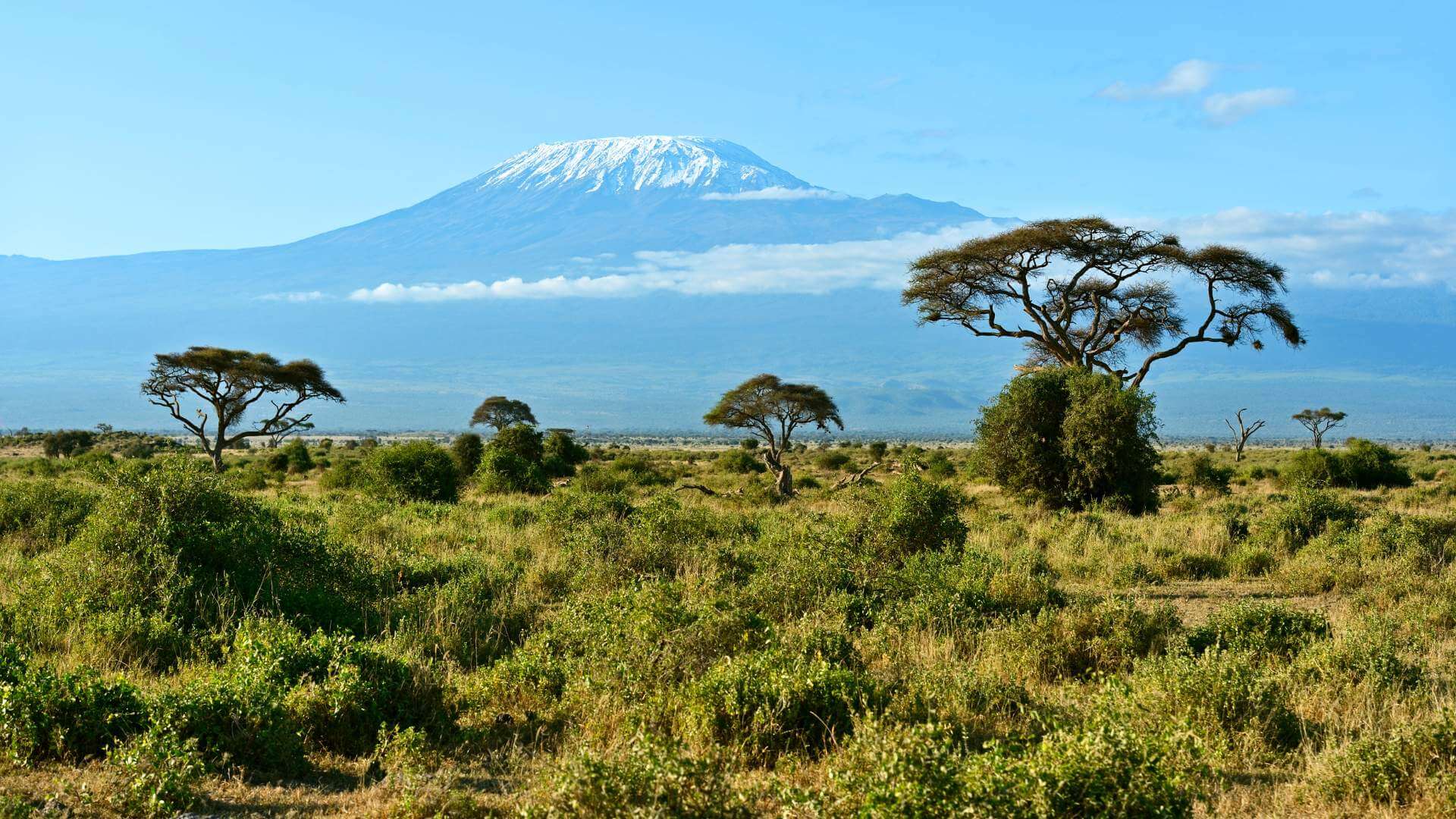
Trekking Tips
What to Wear: Light, breathable clothing is ideal for this part of the trek. A good pair of trekking boots is also essential, as you'll be walking on farm paths and dirt roads.
Things to Know: This zone is the easiest to traverse, but it's still important to stay hydrated and protect yourself from the sun.
2. The Rainforest Zone (1,800 - 2,800 meters)
As you move higher, the scenery changes dramatically as you enter the Rainforest Zone. This is one of the most vibrant and biodiverse areas of the mountain, stretching from 1,800 meters to about 2,800 meters. The rainforest is lush and green and often shrouded in mist, thanks to the high moisture levels trapped by the forest canopy.
Climate and Vegetation
The Kilimanjaro climate in this zone is warm and humid, with frequent rainfall, especially during the wet seasons (March to May and November). Temperatures range from 45°F to 60°F (7°C to 15°C). The dense forest is filled with towering trees, vines, and a variety of plants, including orchids and ferns. If you're lucky, you might spot some of the wildlife that inhabits this area, such as monkeys, birds, and even elephants.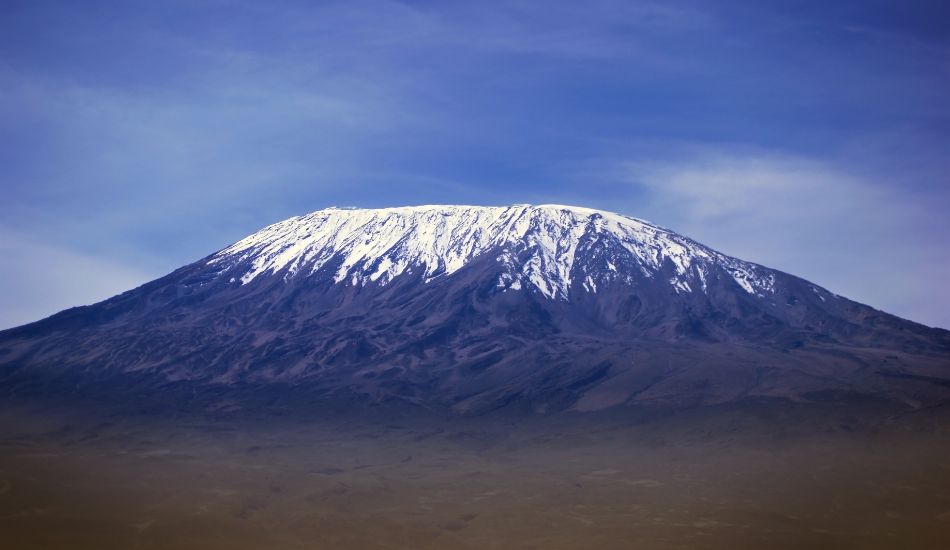
Trekking Tips
What to Wear: Waterproof gear is a must in the Rainforest Zone. A lightweight rain jacket, moisture-wicking clothing, and waterproof boots will keep you comfortable.
Things to Know: The trails can be muddy and slippery, so take your time and use trekking poles for balance.
3. The Moorland Zone (2,800 - 4,000 meters)
Beyond the rainforest, the landscape opens up into the Moorland Zone. This zone, which spans from 2,800 meters to 4,000 meters, is characterized by rolling hills, rocky outcrops, and sparse vegetation. The trees give way to giant heathers, tussock grasses, and the iconic giant lobelias and groundsels, which have adapted to the harsher conditions.
Climate and Vegetation
The climate in this Kilimanjaro climate zone is much more relaxed and drier than the rainforest. Temperatures can vary widely, from 30°F to 50°F (-1°C to 10°C) during the day, with colder nights. The vegetation here is dominated by giant heathers, lobelias, and groundsels, which are adapted to the harsher conditions. The air becomes thinner, and you may start to feel the effects of altitude.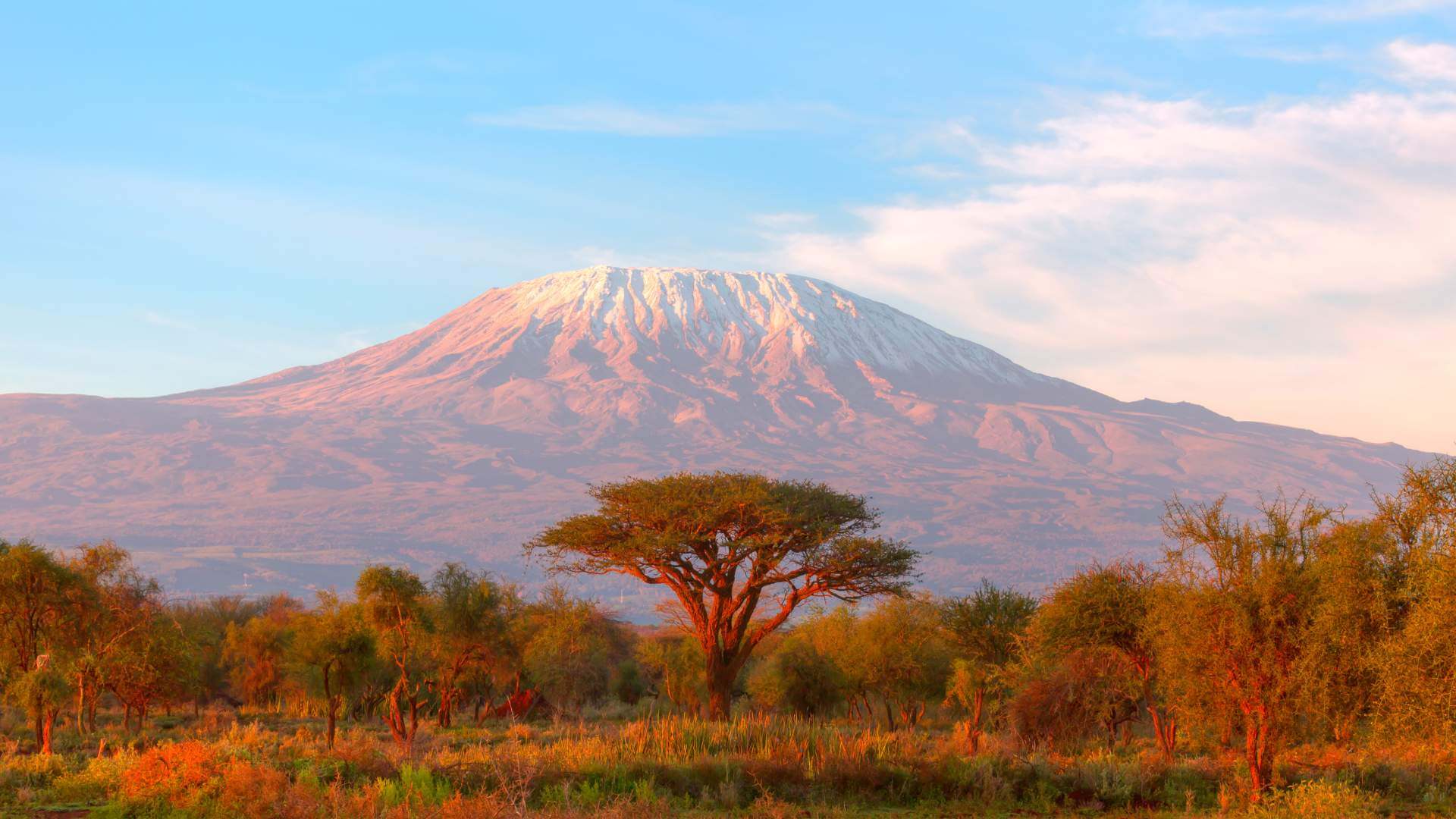
Trekking Tips
What to Wear: Layering is essential in this zone. Wear a thermal base layer, a fleece, and a windproof jacket. You'll also need a hat and gloves for the colder temperatures at night.
Things to Know: As you climb higher, you might experience symptoms of altitude sickness. Listen to your body, and don't hesitate to take it slow if needed.
4. The Alpine Desert Zone (4,000 - 5,000 meters)
As you climb higher, the landscape becomes more barren and the air thinner, signalling your entry into the Alpine Desert Zone. This zone, stretching from 4,000 meters to 5,000 meters, is a harsh environment with extreme temperatures, strong winds, and minimal vegetation. The soil is rocky and dusty, and the landscape is dotted with volcanic rocks and boulders.
The climate in this zone is starkly different from the lush rainforest below. Due to direct sunlight, daytime temperatures can soar to around 30°C (86°F), but at night, they can plummet to well below freezing. The lack of moisture means that clouds are rare, leading to clear, star-filled skies at night. However, the intense UV radiation and low oxygen levels make this a challenging environment for trekkers.
Climate and Vegetation
In this Mount Kilimanjaro climate zone, the temperature fluctuates dramatically, from scorching heat during the day (up to 90°F or 32°C) to freezing cold at night (as low as 10°F or -12°C). The air is arid, and there's little moisture, making it challenging for plants to survive. Only a few hardy species, such as lichens and mosses, can be found here.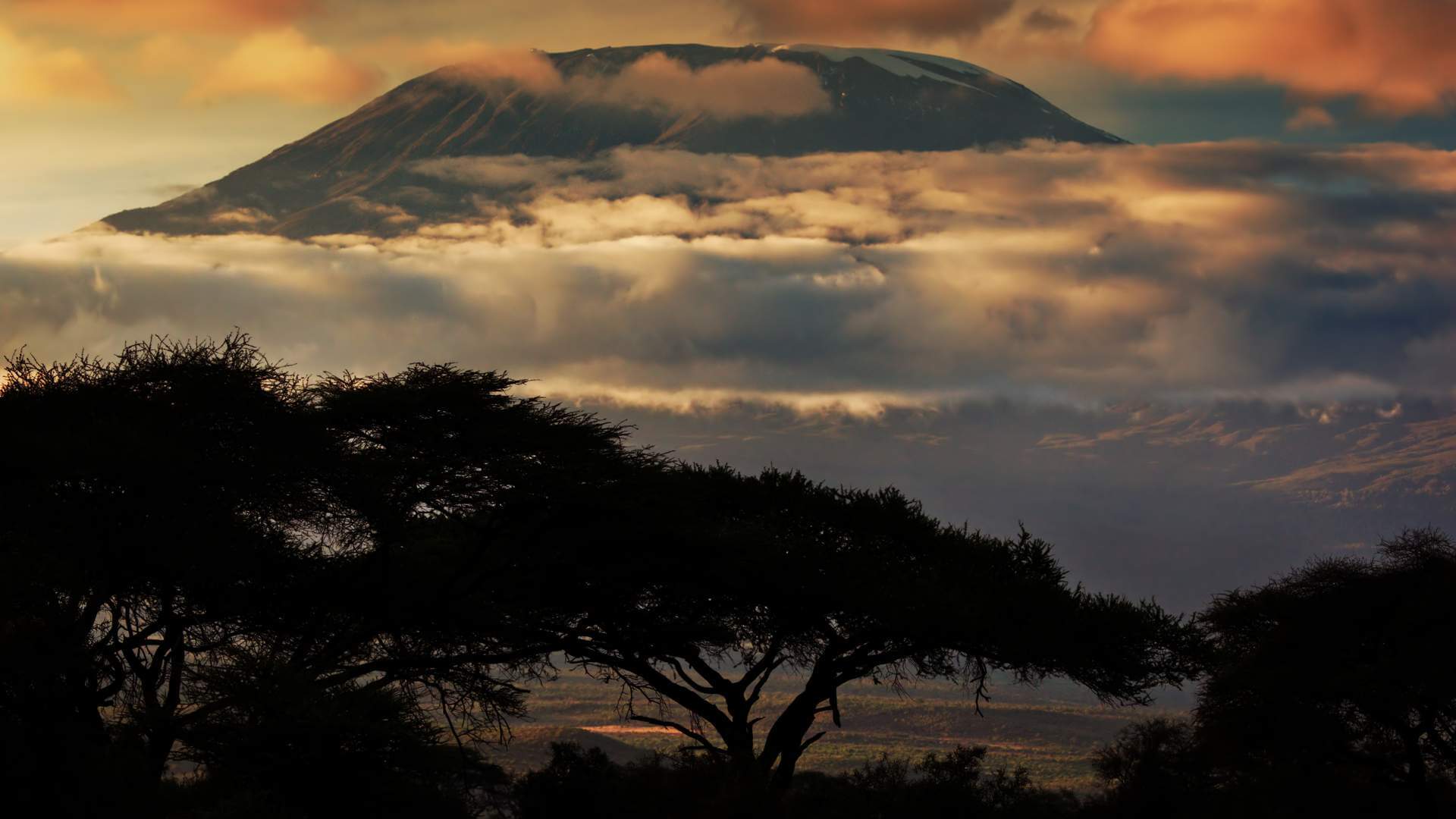
Trekking Tips
What to Wear: Prepare for extreme heat and cold. Wear sun-protective clothing during the day and switch to insulated layers at night. An essential is a good-quality sleeping bag rated for low temperatures.
Things to Know: The dryness and altitude can cause dehydration, so drink plenty of water and protect yourself from the sun's harsh rays with sunscreen and sunglasses.
5. The Arctic Zone (5,000 - 5,895 meters)
Finally, the journey culminates in the Arctic Zone, Mount Kilimanjaro's highest and most challenging climate zone. This zone begins at around 5,000 meters and extends to the summit at 5,895 meters. The Arctic Zone is a stark, icy wilderness with glaciers, snowfields, and very little life. The air is thin, with oxygen levels about half of those at sea level, making every step a struggle.
Climate and Vegetation
The climate in the Arctic Zone is extreme, with temperatures often dropping below freezing, even during the day. The air is thin and dry, and there is almost no vegetation—just ice, snow, and rocks. The landscape is dominated by glaciers, and the lack of oxygen makes every step feel like a monumental effort.
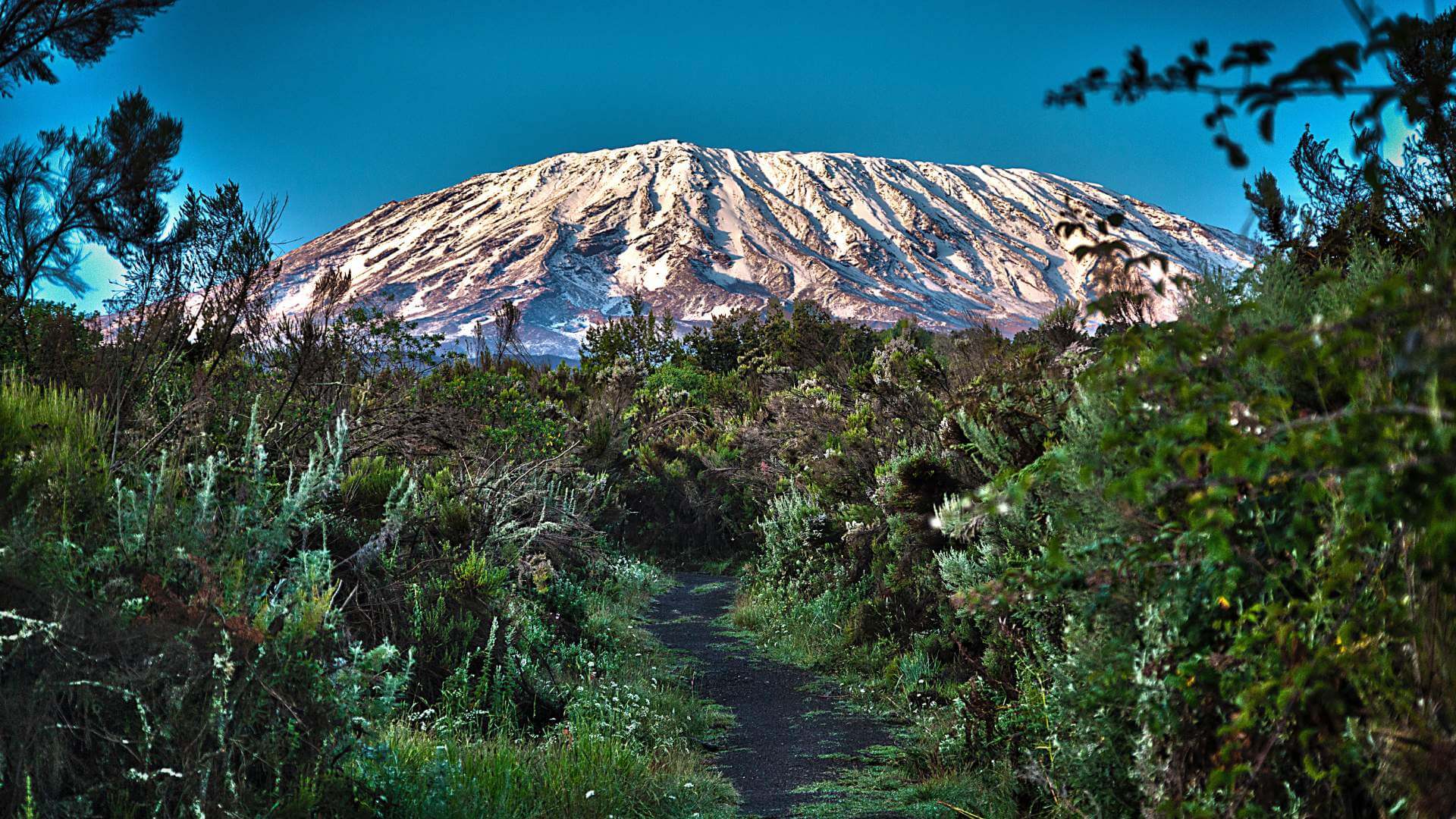
Trekking Tips
What to Wear: This zone requires cold-weather severe gear. A down jacket, thermal layers, insulated gloves, and a balaclava or face mask are essential to protect yourself from the cold.
Things to Know: Altitude sickness is expected in this zone, and it's necessary to monitor your symptoms closely. The final push to the summit is both mentally and physically demanding, but the reward of standing on the Roof of Africa is worth every step.
The Impact of Climate Change on Mount Kilimanjaro
As with many of the world's natural wonders, Mount Kilimanjaro is not immune to the effects of climate change. Over the past century, the glaciers on Kilimanjaro have been steadily retreating, and some scientists predict they could disappear entirely within the next few decades. This alarming trend is attributed to rising global temperatures, which are altering the delicate balance of the Kilimanjaro climate.
The melting glaciers affect the mountain's iconic appearance and have broader environmental implications. The loss of glacial water sources could impact the local communities that rely on them for agriculture and drinking water. Additionally, the changing climate could alter the vegetation zones on the mountain, potentially threatening the unique ecosystems that exist there.
These changes may mean a different experience for trekkers in the future. The once snow-capped peak might disappear, and the challenges of the climb could shift as the mountain's climate continues to evolve.
Preparing for the Kilimanjaro Climate Zones
Climbing Mount Kilimanjaro is not just a test of physical endurance but also of mental strength as you face the challenges of varying climates. To prepare, it's essential to:
- Layer Your Clothing: The key to staying comfortable is layering. Start with moisture-wicking base layers, add insulating layers like fleece, and top it off with a waterproof and windproof outer layer.
- Stay Hydrated: Dehydration can be a severe risk, especially as you ascend higher where the air is dry and thin. Drink plenty of water and consider bringing rehydration salts.
- Acclimatize Properly: Give your body time to adjust to the altitude by following a gradual ascent and considering an extra day for acclimatization.
- Be Prepared for the Cold: The Arctic Zone is unforgivingly cold. Make sure you have the right gear, including thermal clothing, a good-quality sleeping bag, and insulated boots.
Read our blog, Training Plan for Kilimanjaro Climb
Summing Up
Climbing Mount Kilimanjaro is more than just a physical challenge; it's a journey through the Earth's climate, all packed into one incredible mountain. From the warm, fertile fields of the Cultivation Zone to the icy, windswept summit of the Arctic Zone, you'll experience the full spectrum of what nature has to offer.
Understanding the Mount Kilimanjaro climate zone is critical to appreciating the mountain's beauty and preparing for your climb. Each zone presents its own set of challenges and rewards, making the journey to the summit a truly unforgettable adventure. So, if you're ready to take on Kilimanjaro, pack your bags, lace up your boots, and get ready to experience one of the most diverse and awe-inspiring climates on the planet.
Plan your Kilimanjaro climbing with Footprint Adventure, A Sustainable Travel Company in Nepal. Book Now!
FAQs
What are the five climate zones of Mount Kilimanjaro?
Mount Kilimanjaro has five distinct climate zones: the Cultivation Zone, Rainforest Zone, Moorland Zone, Alpine Desert Zone, and Arctic Zone. Each zone has its own unique ecosystem and climate.
How does the climate change as you ascend Mount Kilimanjaro?
As you climb higher, the climate becomes cooler, drier, and less hospitable to life. Temperatures drop significantly, and oxygen levels decrease, making the trek more challenging.
What should I wear for the different climate zones on Kilimanjaro?
Layering is key. Start with moisture-wicking base layers, add insulating layers, and bring a waterproof jacket and pants. For the higher zones, you'll need thermal clothing and a good down jacket.
How cold does it get on Mount Kilimanjaro?
At the summit, temperatures can drop to -20°C (-4°F) or lower in the Arctic Zone, especially at night. Therefore, appropriate cold-weather gear is essential to handle these conditions.
Is there snow on Mount Kilimanjaro?
Yes, the Arctic Zone at the top of Mount Kilimanjaro is often covered in snow and glaciers despite its location near the equator.
How does the altitude affect the climate of Kilimanjaro?
As altitude increases, temperatures drop, and the air becomes drier and thinner. This creates a range of climates, from the warm, humid base to the freezing summit.







